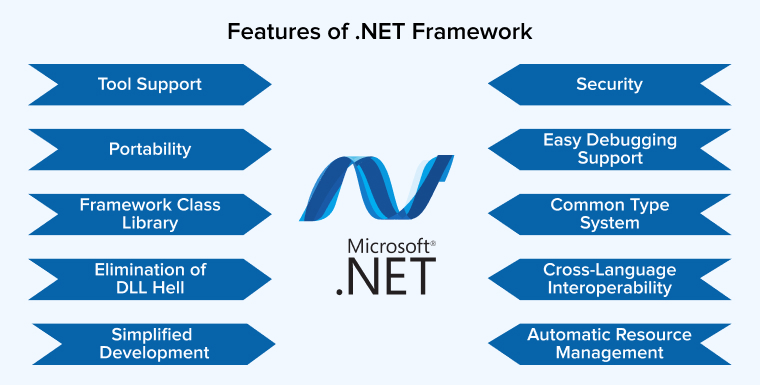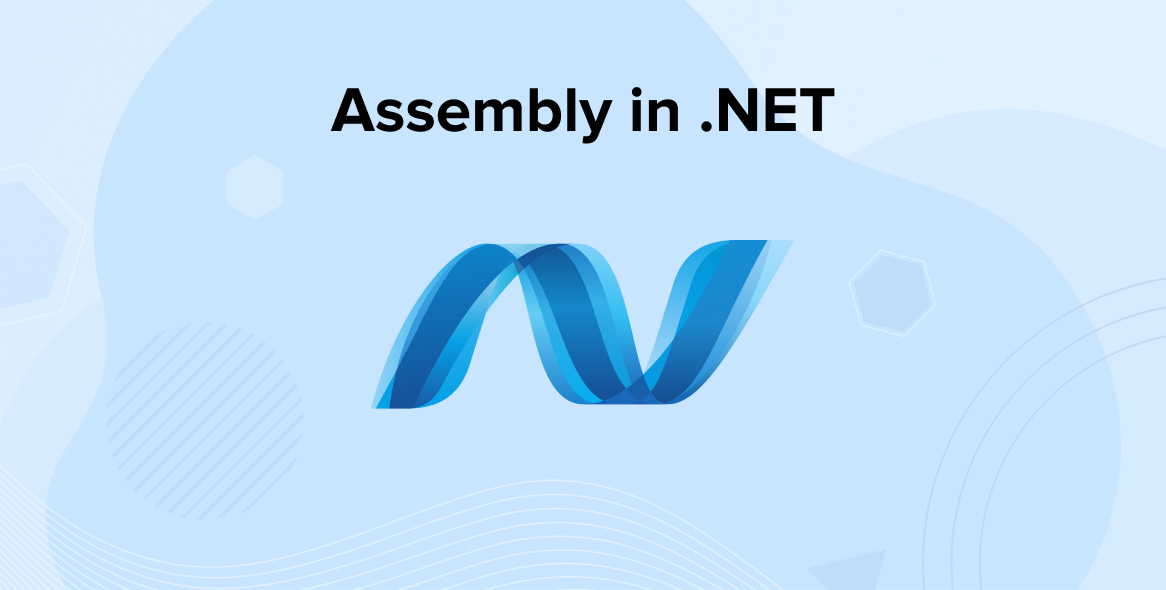
Microsoft, a technology giant has given the app development market one of the best frameworks called .NET. The .NET framework has the capability to facilitate designing and developing applications that are robust, scalable, and portable. The applications created with the .NET framework can be executed in a distributed environment. This proves that .NET is a framework that presents a device-independent computing model to the developers in a managed environment for creating unique applications for their clients. Seeing .NET’s popularity and scalability, the majority of the businesses have started hiring .NET development services providers who can create a top-notch app for their company by taking complete advantage of the features of .NET.
To know more about .NET framework’s features that attract both business owners and developers towards it and see how any top .NET app development company uses them to create a robust application, let’s go through this blog.
1. Features of .NET Framework

Some of the major features of .NET Framework are –
1.1 Automatic Resource Management
When it comes to .NET framework, the developers get efficient and automatic resource management systems like screen space, memory, network connections, and more. And this is all possible because of the common language runtime (CLR) of the .NET framework. In CLR, a garbage collector is an approach that serves as an automatic memory manager. The garbage collector here manages to allocate and release the memory for the .NET application. Every time a new object is created in the application, the common language runtime starts the process of allocating memory for the object from the managed heap. In this case, the runtime has the capability to handle object layout automatically and it also manages references to objects by releasing the references when they are not in use.
Basically, automatic memory management is an approach that helps in resolving the two most common application errors, invalid memory references, and memory leaks.
1.2 Cross-Language Interoperability
Language interoperability is one of the features of this cross-platform framework that comes with the ability that enables the code to interact with another code that is written by the .NET developers with the use of different programming languages. Basically, when it comes to creating applications for the clients’ businesses, developers prefer to give them .NET apps as these applications can be developed easily by maximizing the code reuse and improving the overall efficiency of the app development process. And all this is possible because of the cross-language features of the .NET framework.
1.3 Common Type System
One of the features of the .NET framework is a common type system. It is an approach of .NET that ensures that the objects of the programs that are written in different .NET compliant programming languages have the capabilities to communicate with each other or not. Basically, a common type system (CTS) helps the developers to make a system that doesn’t lose data when a type in one language starts transferring data to a similar type in another language.
This means that CTS has the capability to ensure that the data of an application is not lost when an integral variable of VB.NET is transferred to an integer variable of C#. The common type system defines a set of rules and types that are general for all the targeted languages at the CLR. It has the capability to support both reference types and value types. Here the value types are generated in the stack and they include all primitive structs, types, and enums. On the other hand, when it comes to reference types, they are developed in the managed heap and come with arrays, objects, and collections.
1.4 Easy and Rich Debugging Support
In .NET, the IDE (integrated development environment) has the capability to offer easy and rich debugging support. This means that when any exception occurs during the run time of an application, the program stops working, and the IDE marks the line of the code that contains a high error with the other errors that might have occurred and offered. In addition to this, the runtime of .NET technology also offers a built-in stack which can be much easier to find bugs.
Further Reading on:
Best .NET IDEs Used by Developers
1.5 Security
Another feature of .NET which makes all the developers choose this framework for creating their client’s application is security. The CLR in .NET has the capability to manage the system with the help of code and user identity coupled with a few permission checks. Here, in .NET, the identity of the source code can be known and permission for the resources can be changed as granted. This means that the security measures of the .NET framework are very strong. This framework also offers great support for role-based security with the use of Windows NT accounts and groups.
1.6 Tool Support
One of the best .NET framework features is its support for different types of tools. The CLR of .NET works hand-in-hand with all the tools that developers use for software development. Some of such tools are visual studio, debuggers, compilers, and profilers. These .NET tools have the capability to make the developer’s job much easier and simpler.
1.7 Portability
When it comes to app development in .NET, one of the best features that the developers get is .NET environment portability. This means that when the source code of the .NET application is written in a CLR-compliant language, it compiles and generates an intermediate and machine-independent code. This type of code portability was originally known as Microsoft Intermediate Language (MSIL). But later it was renamed Common Intermediate Language (CIL). The concept of CIL is the key to the portability of multiple languages in .NET.
1.8 Framework Class Library
One of the key features of .NET is its class library. The Base Class Library (BCL) in .NET is a type of library that is available for all .NET languages. This library has the capacity to offer classes that encapsulate many different but common functionalities like database interaction, reading and writing files, image design, XML and JSON manipulation, and more.
1.9 Elimination of DLL Hell
Another Visual Basic .NET framework feature is the elimination of DLL Hell. Generally, DLL Hell happens when various applications try to share a common DLL. This issue was resolved by the .NET framework by enabling the coexistence of multiple versions of the same DLL.
1.10 Simplified Development
With the .NET framework, web app development has become simpler as installing or uninstalling a window-based application can be carried out by copying or deleting files. And this is because the .NET components are not referenced in the Visual Studio code registry.
2. Conclusion
As seen in this blog, .NET is one of the best software development frameworks available in the market. This Microsoft product offers various .NET programming languages that enable the developers to create unique applications in its framework and run on the Windows platform. This feature-rich framework can be useful for creating different types of applications like web-based apps, web services, and forms-based apps. With the use of the .NET cross-platform framework, the developers can choose from a variety of programming languages before starting their app development process. This is the main reason behind this framework’s popularity.






Comments
Leave a message...